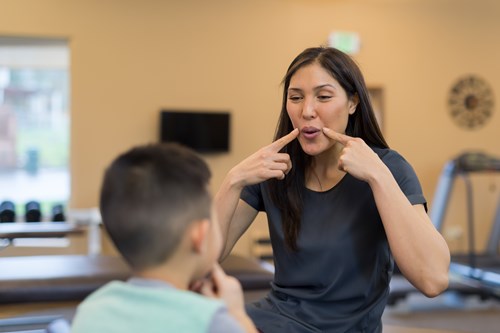Teacher trainer frustrations: trainees swerving pronunciation teaching!
Picture this: your trainees get, or have an awareness of, why phonology in teaching is important in input sessions, yet avoid it like the plague in their teaching … Why is this? What can be done about it? Gerhard looks at why this happens and suggests a way forward for teachers and trainers.

As a trainer, it is exciting to see a trainee get something right on a course. Maybe they have finally gathered the confidence to venture into a proper task-based lesson rather than relying on a Present Practice Produce (PPP) approach, or perhaps they have used knowledge from a session we did on grammar or vocabulary to improve clarification of language items through examples or concept checking questions ... however, why is it we don’t often seem the same reaction with the pronunciation input no matter how interested they were during the session?
Perhaps it’s partially to do with the fact we can relatively easily analyse the meaning and form of grammatical structures or lexical items and use these in our lessons, and even their pronunciation for that matter. However, the problem tends to arises when trainees start to practice and reinforce pronunciation as it soon begins to feel like the pronunciation stage is just say all the words together after me, say them individually, and then let’s move on. Of course, as a technique in itself, it can work, but let’s face it, choral drilling or other types of drilling activities soon seem pretty forced in a task-based lesson, and there is the likelihood that it might become boring for students.
But why do trainees revert to these techniques and how come all the knowledge we impart in terms of pronunciation teaching not actually filter into their teaching?

Abstract connection to the classroom
Very often, the more theoretical elements of grammar and lexis has a direct application to the classroom. We discuss lexical sets, and it can immediately be applied. We discuss the third conditional, and you can immediately apply it. But, with phonology, if we discuss partial or full assimilation, for example, the direct application to the classroom is not always clear, and if anything, could be quite difficult to practise. It is easy to think of a context in which you might introduce animals, or places in a town, or the past simple, but a context for assimilation is near impossible simply because it is so abstract. While many SLA experts agree that introducing grammar or vocabulary with a building blocks approach is not the best way of acquiring grammatical competence, it is possible, and as a result, teachers respond well to activities that help introduce or practice grammar and vocabulary. The lack of actual activities for practicing pronunciation around a specific concept, makes contextualising pronunciation teaching around a specific concept is very difficult.
Incorporating phonology through grammar and lexis
Once you have a solid grounding in the basic theory of phonology, it becomes a lot easier to incorporate pronunciation into your lessons. This means that you need to be constantly aware of things like the following:
- Where are consonant clusters or sounds that might be difficult?
- How many syllables are there in the words I am teaching, and how will I highlight word stress?
- Are there certain words that are part of fixed phrases or common chunks? If so, how can I highlight connected speech and stress across the phrase or chunk?
- If we are working with sentences, how can I highlight sentence stress and intonation?
By constantly asking yourself these questions, it becomes habitual to incorporate some form of pronunciation focus into your lessons. The key then is to consider how you are answering these questions in the lesson planning process ad reflect on what works and what doesn’t work in your context.
It is frustrating sometimes for trainers if pronunciation stages are weak, but it does take some time to really come to grips with pronunciation and all the different ways the theory impacts actual pronunciation. As trainers, these questions should always be asked in the lesson planning process, to make sure trainees form the habit of asking themselves these questions. The next part looks at things to do (as a trainer or teacher) to get started.

Something immediately useful
If you are consistently asking yourself the questions above before each lesson, then the next very easy step is to ask yourself what phrases appear very frequently (or might appear very frequently) in your lessons. Consider teaching and drilling these with connected speech and encourage learners to use them as you have drilled them. For beginners, these could be very basic phrases to communicate in the classroom, and for elementary or intermediate learners, phrases to agree or disagree during discussions, for example. A few common ones include:
Yes, I do. (pronounced as ye-sai-do)
I agree. (with an intrusive j between the two words)
May I? (with linkage between the two words)
So do I? (with an intrusive w between do and I)
What do you think? (elision of the t in what, linking of do and you to sound almost like dew)
Listen to what your students need to communicate in the classroom and gradually include these phrases in your lessons even if it is not directly related to your lesson aim. They will need this language and it is easier to transfer elements of pronunciation from phrases they are already familiar with than to introduce an abstract concept like consonant to vowel linking (as in an apple pronounced a_napple). Remember that for learners, the theory can appear very abstract, so it needs to be made very concrete with language they already know or are very likely to use consistently in the classroom.
The frustrating thing for trainers is that more often than not, trainees and new teachers seem to be so excited about what they are learning about grammar and vocabulary that they stick to the same kind of word and choral drilling in each lesson, and at times, include pronunciation in their error correction stages. These stages are often at the end of the lesson and the pronunciation correction shows very little if any uptake. Trainers should make sure trainees and new teachers notice common phrases being used in the classroom in lesson feedback, and consider how these can be used as a basis for pronunciation teaching in every lesson.
Activities
There are numerous books and websites with good pronunciation activities – the one I wrote with John Hughes, ETpedia Pronunciation is a good start (if you forgive the plug!). But especially with books, it is almost pointless to read it cover to cover. Choose one or two activities and do them in class. Then consider how well they worked and what you would do differently the next time you use it. The most important thing is, then use them again and reflect again. Once you have two or three ‘go to’ activities, add another two or three to your teaching toolbox. Consider having an activity to focus on individual sounds and minimal pairs, one for word stress, one for sentence stress, and one or two for connected speech.
The frustration here for trainers are that we train someone in a CELTA or a CertTESOL and see them again two or three years later for a Delta or Trinity DipTESOL, only to see that their repertoire of pronunciation activities is identical to what they had when they finished their initial qualification with us.

Looking forward
Start now. That is pretty much the most important thing I am hoping anyone can get from this. Planning on including more pronunciation work in your lessons does not have to happen after you have read the next book. It can start in your next lesson. And students generally really want to work on pronunciation, because there are few things more demotivating that avoiding certain words or phrases because you are not sure you are saying it clearly enough.
We’d love to know how you get on with your pronunciation teaching, and indeed your trainees! Do let us know in the comments below.

Comments
Write a Comment
Comment Submitted